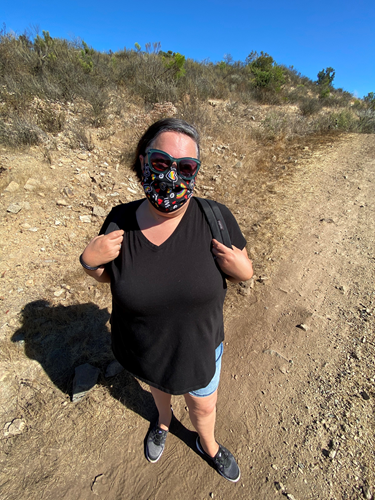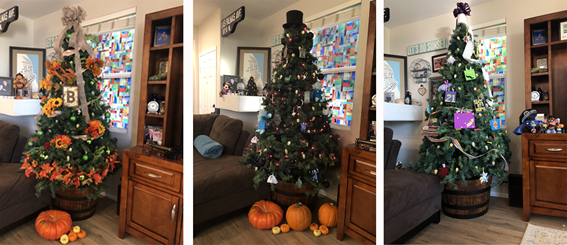me+ Community member, Sarah Biggart, shares how she experienced feelings of Medical PTSD throughout the COVID-19 Pandemic with her ostomy. Sarah’s blog was written in November of 2020, but remains relevant as we continue to navigate through the Pandemic.
Last Thanksgiving, following a beautiful dinner and a house filled with family and friends, I had to take my Dad straight to the emergency room. After a decline in health, my dad passed in January. The last months of his life had been a slog through the fog; however, saying goodbye was peaceful and everything about his passing brought me peace. It was time. Just as I was emerging from this fog, a new storm was approaching. A virus, spreading globally and forcing bustling cities into lock down: COVID-19.
 As a person with a complicated medical history, I was definitely paying attention, and started taking precautions very early to mitigate risk. As anyone who lives with a compromised immune system and chronic illness knows, when we get sick, it can have a way of snowballing.
As a person with a complicated medical history, I was definitely paying attention, and started taking precautions very early to mitigate risk. As anyone who lives with a compromised immune system and chronic illness knows, when we get sick, it can have a way of snowballing.
I was always aware of Medical PTSD, and recognized it in myself. The trauma of long health battles, surgeries and hospitalizations made my fears of the virus very real. I felt more affected by that fear than ever. It can be triggering for me to even smell rubbing alcohol; so smelling the strong hand sanitizers creates a visceral reaction.
When I saw people receiving nasal swabs, it took me instantaneously to having NG Tubes inserted. I could feel it, and I averted my eyes. When I saw images of people laying intubated, I automatically could feel the sensation in my throat. I remember all of those sensations so vividly. They are a part of my trauma.
It’s honestly hard to lay down exactly what this past year has been like emotionally for me. On one hand I am filled with gratitude that I am able to stay safe at home. I work from home, my child participates in remote learning, and although my husband does still go outside the home to work, we have stayed safe and happy in our cozy home. We’ve tried to keep our family traditions and make new memories.
Unfortunately, this year has also been a very bleak reminder of how my health and quality of life hang in a very delicate balance. If I were to get the virus, I have major concerns about my ability to survive. Seeing my community’s complete disregard for the health and safety of those around them has also been disheartening.
I often think about my ostomy supplies. When it became hard to get essentials this Spring, the thought of not having access to the pouches and wafers that I need was especially daunting. What would my life be like if I was unable to pouch my stoma?
Doctors figured out how to create ostomies long before companies like ConvaTec were around to innovate. Hearing stories of ostomates before me who had life-saving ostomy surgery, but could not manage them in a sanitary way, weighs heavy. What would my life be like without my supplies? I think of the pioneering ostomates, using rags and mason jars, and other archaic methods. They were true survivors!
So here we are in November. Instead of a full Thanksgiving table, it will be just the three of us this year. While our country is facing an unprecedented public health crisis, my family will continue to stay safe, stay home and mask up. I wish nothing but peace, health and happiness for all of us.
The Pandemic Tree
Early on, to make things fun we pulled out our Christmas Tree, topped it with a roll of toilet paper and strung up some lights. We crafted ornaments and added them to commemorate milestones and events. It was silly and fun, and for us, all bets were off during quarantine. Our family mantra became healthy, happy and sane, we did what we could to get ourselves there. The Quarantree became a Halloween Tree, and now has transformed into a Fall tree. It continues to make our home feel cozy and festive and truly brings us joy.

Editor’s note: This article is from one of our digital sponsors, ConvaTec. Sponsor support along with donations from readers like you help to maintain our website and the free trusted resources of UOAA, a 501(c)(3) nonprofit organization.


